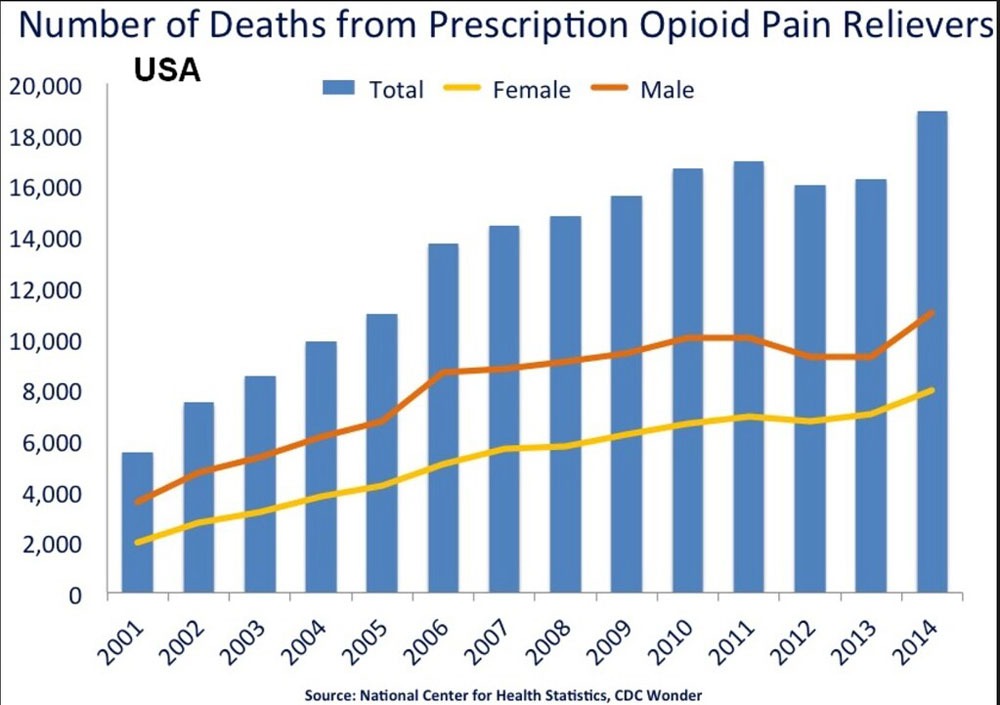
November 25, 2019; New York Times, “The Upshot”
As NPQ has noted, opioid overdose rates have been much higher among whites than blacks. One reason, according to Austin Frakt and Toni Monkovic in the New York Times, is that black patients were far less likely to be prescribed painkillers.
Why? Frakt and Monkovic write that “African Americans received fewer opioid prescriptions, some researchers think, because doctors believed, contrary to fact, that black people 1) were more likely to become addicted to the drugs 2) would be more likely to sell the drugs and 3) had a higher pain threshold than white people because they were biologically different.”
Consequently, as Frakt and Monkovic report, “Unlikely as it may seem, these negative stereotypes appear to have shielded many African Americans from fatal prescription opioid overdoses.”
The researchers, Frakt and Monkovic explain, are Monica Alexander, a statistician at the University of Toronto; Mathew Kiang, a postdoctoral epidemiologist at Stanford; and Magali Barbieri, a demographer at the University of California, Berkeley. Together, these three authors published their study this fall in the journal Epidemiology. Based on a request from the Times, Kiang estimated that had black mortality rates caused by prescription opioids been equivalent to those of whites, black Americans would have experienced 14,124 additional deaths from 1999 to 2017.
Kiang says he found the results “fairly remarkable in at least two ways.”
Sign up for our free newsletters
Subscribe to NPQ's newsletters to have our top stories delivered directly to your inbox.
By signing up, you agree to our privacy policy and terms of use, and to receive messages from NPQ and our partners.
First, it’s a good example of how more medical care is not necessarily a good thing. Second, it’s an extremely rare case where racial biases actually protected the population being discriminated against.
Dr. M. Norman Oliver, Virginia’s health commissioner, tells Frakt and Monkovic that race-based physiological myths have long influenced medical practice. Even today, some doctors believe that blacks are more tolerant of pain. A 2007 study found that physicians are twice as likely to underestimate black patients’ pain as others’ pain, for example.
Frakt and Monkovic note:
Several years ago, researchers at the University of Virginia, including Oliver, probed the beliefs of 222 white medical students and residents and published results in the Proceedings of the National Academy of Science. Half held false physiological beliefs about African Americans. Nearly 60 percent thought their skins were thicker, and 12 percent thought their nerve endings were less sensitive than those of white people.
They add that in 2013, the American Medical Association, the largest medical association in the US, published a review of the relationship between pain and ethnicity in its Journal of Ethics. The study’s authors concluded that variations in treatment stem in part from racial misconceptions about heightened pain tolerance among blacks and from the (false) notion that black and Latinx patients are more likely than white patients to abuse drugs.
Oliver, who is black, says the bias problem in medicine is “not intractable—I’m actually hopeful that we can change the way people think.” Oliver says he is old enough to remember when racism was commonly overt and direct. “It’s primarily unconscious biases today,” he explains, but conscious or unconscious, the biases, Oliver cautions, can still “lead to death.”—Steve Dubb













